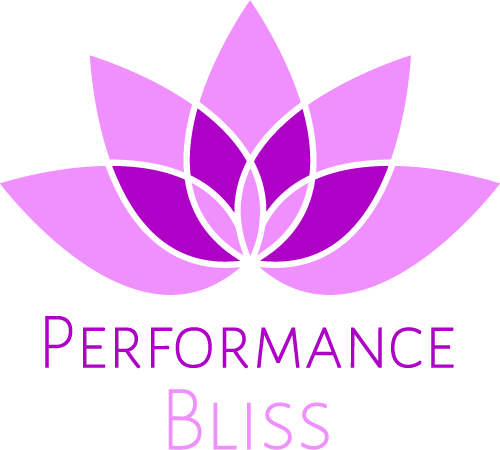In today’s fast-paced business environment, efficiency and employee engagement are critical to a team’s overall success. For managers leading teams of 20-50 employees, maintaining high productivity levels while keeping employees motivated can be a challenge. However, the introduction of team productivity tools offers a powerful solution. By streamlining workflows, improving communication, and automating routine tasks, these tools not only enhance productivity but also boost employee engagement.
In this article, we’ll explore how team productivity tools can improve employee engagement and output, and how integrating the right tools—like Performance Bliss—can lead to a more cohesive, motivated, and efficient workforce.
The Importance of Employee Engagement for Productivity
Before diving into the benefits of team productivity tools, it’s essential to understand the link between employee engagement and productivity. Engaged employees are emotionally invested in their work. They are more likely to go above and beyond, contribute innovative ideas, and stay motivated even in challenging situations.
Studies consistently show that higher engagement levels translate into better business outcomes. According to Gallup, highly engaged teams are 21% more productive than disengaged ones. However, maintaining this level of engagement requires not just strong leadership but also the right tools to support employees in their day-to-day tasks.
By providing employees with team productivity tools, businesses can significantly improve how employees collaborate, communicate, and manage their tasks—all key drivers of engagement and output.
Streamlining Communication with Team Productivity Tools
Communication is the backbone of any successful team. When team members communicate effectively, they can collaborate seamlessly, solve problems quickly, and stay aligned on shared goals. However, poor communication—whether due to disorganized email threads, unclear task instructions, or siloed information—can lead to confusion, delays, and frustration.
This is where team productivity tools come in. Tools that centralize communication, such as Slack or Microsoft Teams, ensure that all team members are on the same page. These platforms offer chat functions, video calls, and project channels, keeping conversations focused and accessible.
By integrating these tools, employees no longer need to sift through endless emails or chase down colleagues for updates. Instead, they have a clear, organized space for communication, making collaboration easier and more efficient. As a result, employees spend less time managing miscommunication and more time contributing meaningful work. This seamless communication also boosts employee engagement, as team members feel more connected and involved in the process.
Tools like Performance Bliss offer a unique advantage by not only supporting task-oriented communication but also integrating feedback and performance reviews. When team members receive regular updates on their performance and progress toward goals, they remain engaged and motivated to improve.
Automating Routine Tasks for Enhanced Focus
Another significant way team productivity tools boost engagement and output is by automating routine, repetitive tasks. Every team faces the challenge of managing small but necessary administrative tasks—such as scheduling meetings, tracking deadlines, and sending follow-up emails—that can drain valuable time and focus.
When employees spend too much time on these low-value tasks, it can lead to burnout and disengagement. Productivity tools that automate these processes free up time, allowing employees to focus on more meaningful, high-impact work.
For example, tools like Trello or Asana can help automate task assignments and project timelines, ensuring everyone knows what they need to do and when without constant micromanagement. Similarly, calendar tools like Google Calendar can automate meeting schedules and reminders, reducing the time spent coordinating logistics.
By reducing the burden of mundane tasks, employees can concentrate on creative problem-solving and strategic thinking, leading to higher engagement and improved output. Additionally, when team members are given more autonomy over their time, they feel trusted and valued, which is a key driver of engagement.
How Team Productivity Tools Foster Accountability
Accountability is essential for any productive team. Without it, tasks can slip through the cracks, deadlines are missed, and team morale suffers. When employees know that their work is being tracked and their progress is visible, they are more likely to take ownership of their responsibilities and put forth their best efforts.
Team productivity tools like Performance Bliss can help managers set clear expectations and track progress in real time. These tools provide dashboards where managers can see who is working on what, how tasks are progressing, and where potential bottlenecks might occur.
For employees, this level of transparency fosters accountability, as they can see exactly how their work fits into the larger team goals. With this visibility, employees are motivated to stay on track and complete their tasks on time. Furthermore, these tools can highlight individual contributions, allowing managers to recognize and reward high performers, which further enhances employee engagement.
Boosting Collaboration Through Shared Workspaces
One of the most powerful features of team productivity tools is their ability to create shared workspaces. In a traditional office setting, employees often collaborate in person, brainstorming ideas or working together on projects. However, with the rise of remote and hybrid work, it’s become increasingly challenging to maintain this level of collaboration.
Team productivity tools like Google Workspace or Microsoft 365 allow employees to work together in real time, regardless of their location. These platforms enable teams to share documents, track revisions, and collaborate on projects without missing a beat. When employees can easily access and contribute to shared work, it fosters a sense of collaboration and teamwork, boosting engagement and productivity.
At Performance Bliss, the focus is on enabling teams to work together seamlessly while also integrating feedback and performance data into the workflow. This allows teams to not only collaborate but also continuously improve their processes and outcomes based on data-driven insights.
Personalized Task Management for Employee Growth
Another key benefit of team productivity tools is that they allow for personalized task management. Different employees have different working styles, strengths, and preferences. Some may thrive on detailed task lists, while others prefer a more flexible approach to managing their work.
Tools like Monday.com or Wrike offer customizable interfaces, allowing employees to organize their tasks in a way that suits their workflow. This flexibility ensures that each team member can manage their time effectively, increasing both productivity and satisfaction.
Additionally, team productivity tools can help employees set personal goals, track their progress, and receive feedback on their performance. Performance Bliss, for example, enables managers to provide real-time feedback on tasks and projects, helping employees stay aligned with their goals and continuously improve.
When employees see their personal growth reflected in their work and feel supported in their development, they become more engaged in their roles, which in turn drives better output.
The Role of Team Productivity Tools in Reducing Stress
Workplace stress is a major cause of disengagement and reduced productivity. When employees are overwhelmed by disorganized workflows, unclear expectations, or an endless list of tasks, their motivation plummets. Team productivity tools can help alleviate this stress by providing clarity, structure, and prioritization.
Task management platforms like ClickUp allow teams to break down large projects into manageable tasks, prioritize their work, and set realistic deadlines. This clarity reduces the feeling of being overwhelmed, as employees have a clear path to follow and know exactly what is expected of them.
Furthermore, by integrating feedback and performance tracking, tools like Performance Bliss help employees stay focused on their priorities, avoid unnecessary distractions, and feel a sense of accomplishment as they complete tasks and receive recognition for their efforts.
Conclusion: How Team Productivity Tools Improve Engagement and Output
The integration of team productivity tools into a workplace is one of the most effective ways to enhance both employee engagement and output. These tools streamline communication, automate routine tasks, foster accountability, and create opportunities for real-time collaboration. By reducing the time spent on administrative tasks and improving transparency, employees are empowered to focus on meaningful work that drives both personal and organizational success.
Performance Bliss, in particular, offers a comprehensive approach to improving team productivity and engagement by combining task management, real-time feedback, and performance tracking into a single platform. This holistic approach ensures that teams are not only productive but also continuously improving, creating a cycle of engagement and high performance.
For teams looking to boost engagement, improve collaboration, and achieve better results, investing in team productivity tools is a powerful and necessary step. With the right tools in place, teams can thrive, delivering higher-quality work in less time while fostering a positive, engaged work culture.


